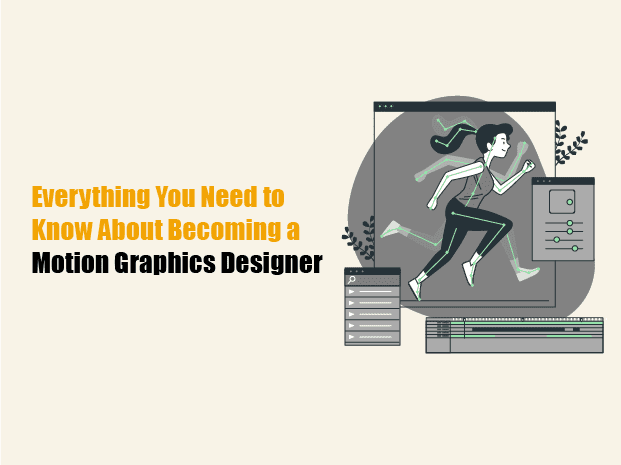In the dynamic world of motion graphics design, where artistry and technology create the best captivating visuals for the web, television, and film. The scope of motion graphics designer is huge, showing its crucial role in various industries.
It stands as the most budget-friendly digital media option for individuals seeking to make a significant impact through video content. In India, beginner motion graphic designers usually earn between INR 3 to 10 lakhs per year, with the average around 4.75 lakhs annually.
Discover why motion graphic designers are at the forefront of bringing life and innovation to the digital landscape.
What skills do motion graphics designers need?
Motion Graphics Designer is an exciting venture, combining creativity with myriad career prospects. In 2022, there were about 394,754 graphic design businesses worldwide. Let us understand the main motion graphic designer skills that is needed:
1. 3-D Modelling
“The best way to predict the future is to create it.” – Abraham Lincoln. And that’s true as motion graphics designer skills today heavily rely on 3-D modelling, making it an essential skill for designers.
Hence, prior to formulating any plans, opting for a 3-D model proves to be the most effective approach for comprehensive understanding.
2. Grasping Animation
A skilled motion graphics designer doesn’t just design static images; they craft a dynamic narrative, mastering the art of movement and timelines to bring their creations to life.
3. Organization
Much like how teamwork and intelligence secure championships, organizational skills play a pivotal role in the success of a motion graphics designer. The freelancing sector is where you’ll find the majority of graphic designers, making up a whopping 90% and dominating the freelance market. Whether operating independently as a freelancer or collaborating within a team, maintaining discipline is the key.
4. Procedural Animation
To overcome the time-intensive nature of motion graphics, designers are increasingly turning to procedural animation, providing flexibility for adjustments and revisions.
5. Texturing and Lighting Effects
Creating realistic 3-D graphics involves surfacing techniques, including reflective, shiny, transparent, or refractive elements. Learning how to apply textures and lighting effects from B. Des in graphic design college enhances the overall visual appeal.
6. Understanding Big-Picture Context
Designers must grasp the broader context of their work, considering its application in video, multimedia, game design, and virtual reality. Adapting the approach based on the intended use is key for success.
7. Adaptability
“We cannot direct the wind, but we can adjust the sails.” – Dolly Parton. Plans can change, and skilled motion designers must be ready to adjust their vision to accommodate client feedback.
8. Timing
“Timing in life is everything.”- John Scully. Mastering timing is crucial, as motion design is inherently story-driven. Effective pacing ensures a natural flow and rhythm, aligning seamlessly with other elements like sound for a cohesive end result.By honing the skills with graphic design courses in Pune, understanding the industry’s context, and mastering relevant software, aspiring designers can position themselves for success in this dynamic and rewarding field.
The Software You’ll Want to Focus On
Various software tools empower motion graphics designers, with popular choices. Proficiency in these tools enhances efficiency and opens doors to diverse creative possibilities.
- For animation, use Adobe After Effects.
- Create vector objects in Adobe Illustrator.
- Edit and animate images in Adobe Photoshop.
- Combine in Adobe Premiere Pro.
Motion Graphics vs. Animation: What’s the Difference?
Motion graphics and animation, though both about bringing things to life, vary in their scope and how they’re used. Motion graphics focus on enhancing visual communication, often involving text and graphics, while animation typically encompasses more complex storytelling through character movements and narratives.
Conclusion
Choosing the path of becoming a motion graphics designer demands a strict commitment to growth and learning. While a formal degree provides a foundation, hands-on learning has great importance in this field. Create a different style by exploring various visuals and animations.
The journey to becoming a motion graphics designer is a dynamic blend of education, practical skills, and artistic intuition. As the architects of visual narratives, motion graphics designers shape the landscape of diverse media platforms. For those eager to kickstart this journey, consider exploring graphic design courses in Pune or getting into a B. Des in graphic design college at MIT ID.
